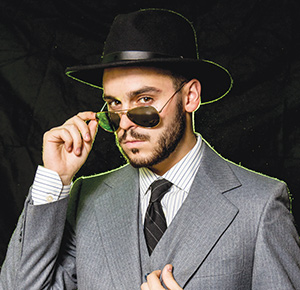Each year, on the final day of October, bands of children take to the sidewalks of neighborhoods all over the country—skittering from house to house and ringing doorbells—seeking the rush of free candy and the thrill of remaining outside after dark. Similarly, each year at the same time, packs of young adults take to the streets, cluster in apartments and crowd into bars, on the hunt for rushes and thrills of their own.
Dressed as ghouls and goblins, knights and princesses or figures from popular culture, they are ostensibly celebrating a Christian holiday, whose earliest incarnations began more than a thousand years ago as All Saints Day and All Hallows’ Eve—a time for commemorating dead saints and the recently deceased who have yet to find their way into the heavenly kingdom.
However, Halloween is about more than honoring the dearly departed, according to Tanya Luhrmann, a professor of anthropology at Stanford and author of Persuasions of the Witch’s Craft: Ritual Magic in Contemporary England.
First and foremost, Luhrmann says, people dress up because “it’s fun.” But also, she continues, as the heat of this year’s Indian Summer fades and leaves continue to fall in the Valley of the Heart’s Delight, children and young adults will don every costume, from Donald Trump to É well É Sexy Donald Trump, taking advantage of all the cultural transgressions to which the holiday lends sanction.

Image: wedding dresses 2014
“There’s a kind of license that comes with wearing costumes that isn’t available to people in ordinary life,” Luhrmann says, noting that “festivals of license,” of which Halloween is one, are common among cultures all over the world. These festivals “allow people to violate the ordinary cultural constraints of their experience, and that is satisfying for people.”
Of course, not everyone is happy with the idea of “license”—structured or otherwise. “Not all observers think it’s proper,” she says, noting that many chafe at the idea that others would chafe at social conventions.
Some religious folk will object to the idea of dressing children as spectral beings, contending that the practice makes light of very real evil forces. Others have lashed out at the sexification of Halloween, linking it to a patriarchal society that objectifies women. And then there’s the drinking and drug use.
Yet, as the anthropology professor observes, festivals which promote “inversion” practices are nothing new and certainly don’t seem to be going anywhere. “The British upper classes used to love costume parties,” she says by way of example. “I think that was not unconnected with their social awkwardness.”
Then there’s Carnival, the days-long party that precedes the Christian fasting season of Lent in many countries. During Carnival, many societal rules and conventions are inverted, which ultimately “draws attention to the fact that these are social choices.”
Wearing clothing that covers the majority of our bodies, refraining from excessive consumption of alcohol, laws forbidding the use of recreational drugs—these are all social choices, Luhrmann explains. “Culture constrains much of human behavior and experience, giving us rules to follow, and of course people chafe against those. So, these periods of structured license—people really like them.”
Luhrmann says that the glut of highly revealing Halloween costumes are a reflection of the desire people have to break with social norms—if only for an evening.
“The sexiness of Halloween for adults is much more tied to the idea of license that you are allowed to do things with your body and expose parts of your body that you wouldn’t in a ordinary day.”
Also Read: http://www.sheinbridaldress.co.uk/plus-size-wedding-dresses









